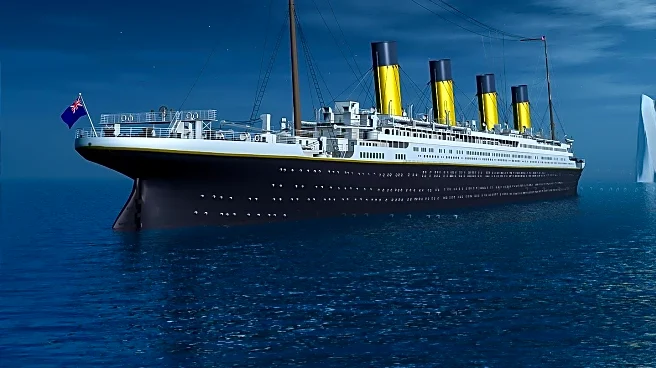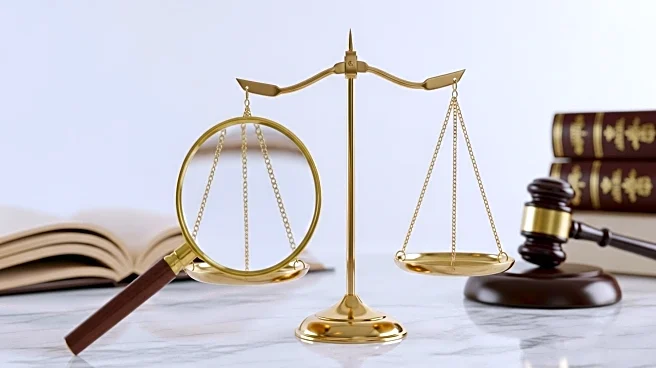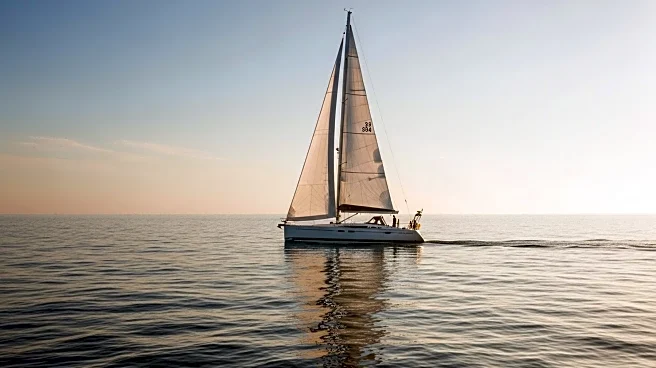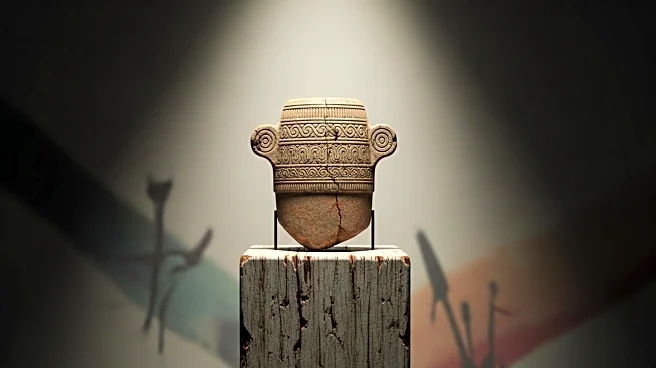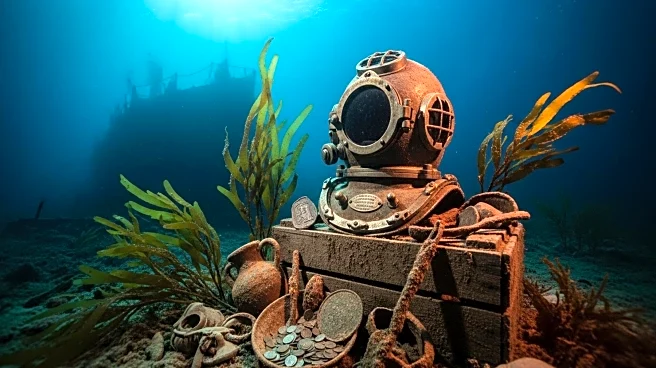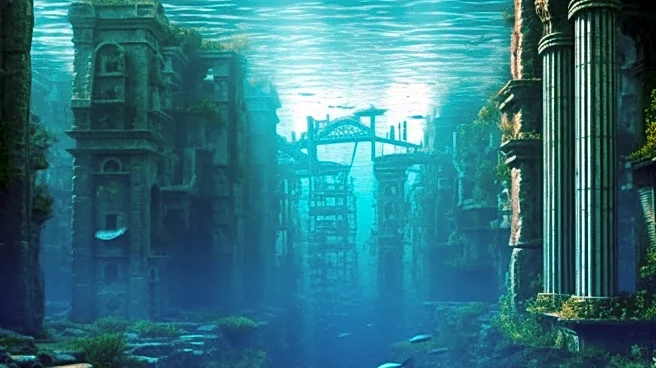What's Happening?
Artifacts from the Britannic, the sister ship of the Titanic, have been successfully retrieved from the Aegean Sea. The Britannic was built in the 1910s for the White Star Line but was repurposed as a hospital ship during World War I. It sank in 1916 after hitting a German mine, resulting in the loss of 30 lives. A team of 11 divers conducted the first selective recovery of objects from the wreck site, retrieving items such as the ship's lookout bell, signal lamp, and ceramic tiles. These artifacts are being conserved and will be displayed at the National Museum of Underwater Antiquities in Piraeus, Greece.
Why It's Important?
The recovery of artifacts from the Britannic offers a unique opportunity to explore and preserve maritime history. These objects provide insights into early 20th-century shipbuilding and the impact of World War I on civilian vessels. The exhibition of these artifacts will enhance public understanding of historical events and contribute to cultural heritage preservation. The mission also highlights advancements in underwater archaeology and the potential to rewrite historical narratives through technology.
What's Next?
The recovered artifacts will undergo further conservation and research before being displayed at the National Museum of Underwater Antiquities. The museum is currently under construction and will feature a section dedicated to World War I. The expedition faced challenges due to difficult conditions at the wreck site, suggesting that future missions may be planned to recover additional artifacts. The ongoing interest in the Britannic and Titanic continues to drive historical research and public fascination.
Beyond the Headlines
The recovery mission underscores the ethical considerations in underwater archaeology, balancing the preservation of historical sites with the retrieval of artifacts. It also raises questions about ownership and the commercialization of maritime heritage, as the Britannic was purchased by Simon Mills, an amateur maritime historian. The project reflects broader cultural efforts to revisit and reinterpret historical events, using technology to uncover new perspectives.

